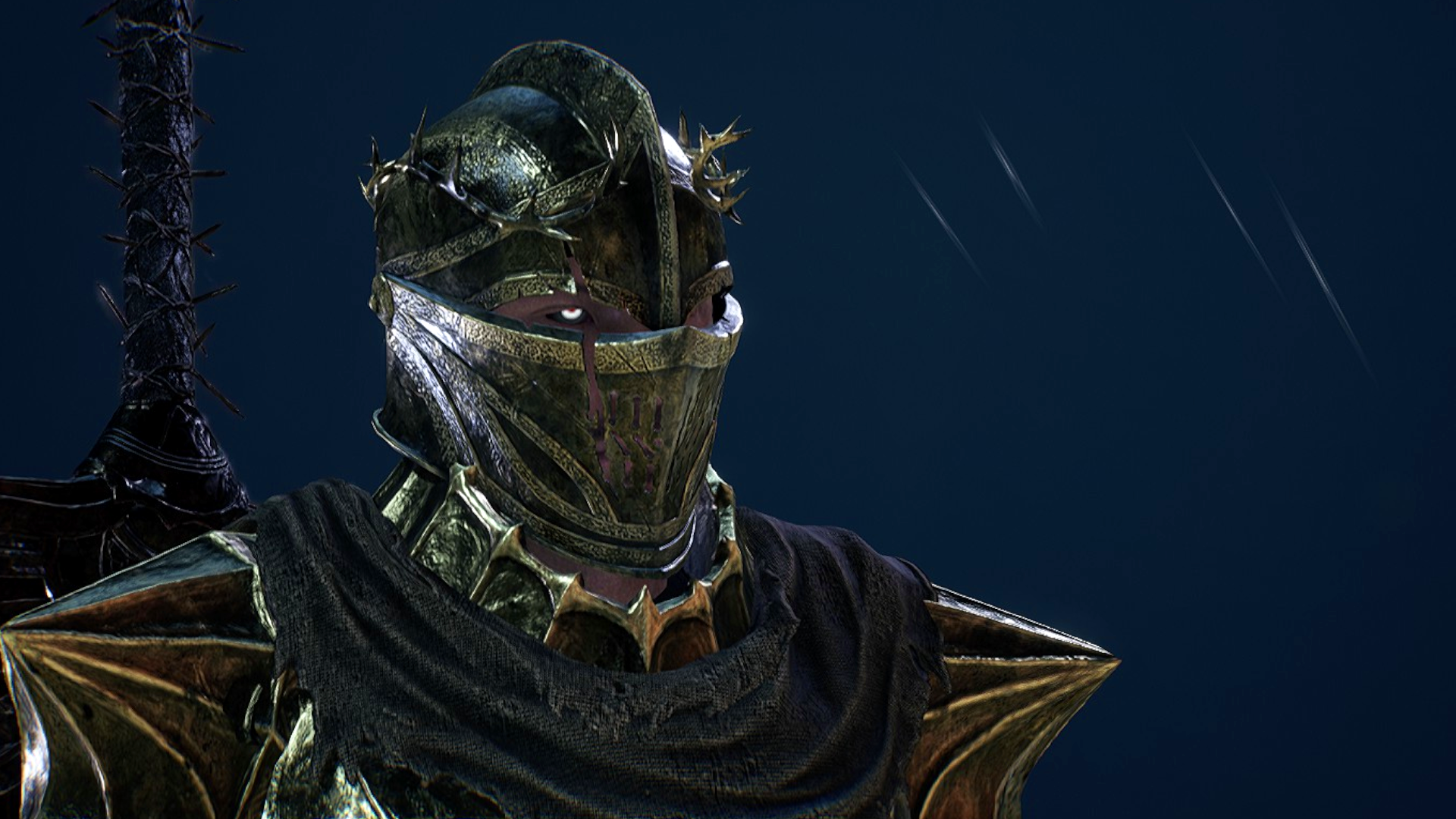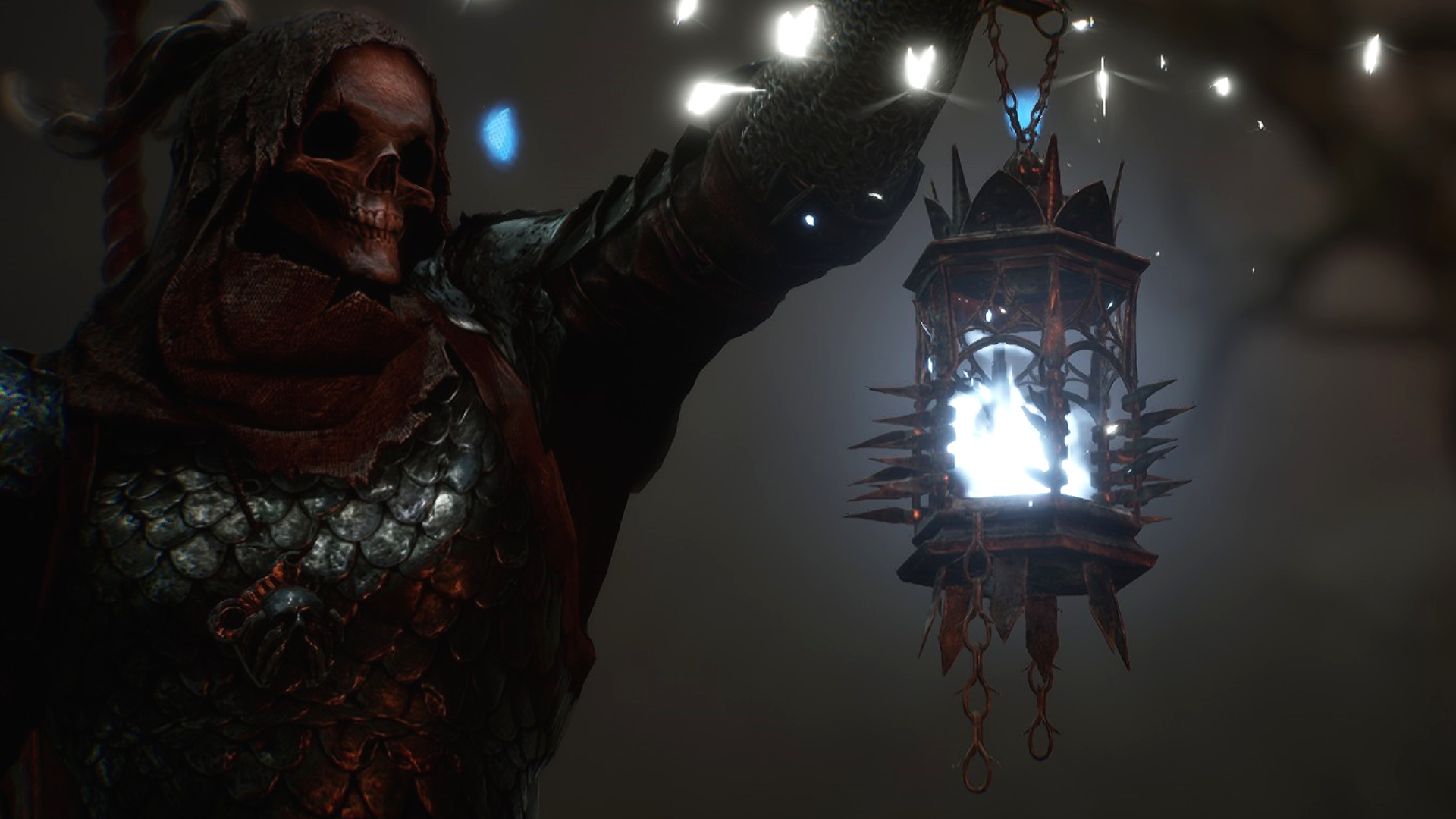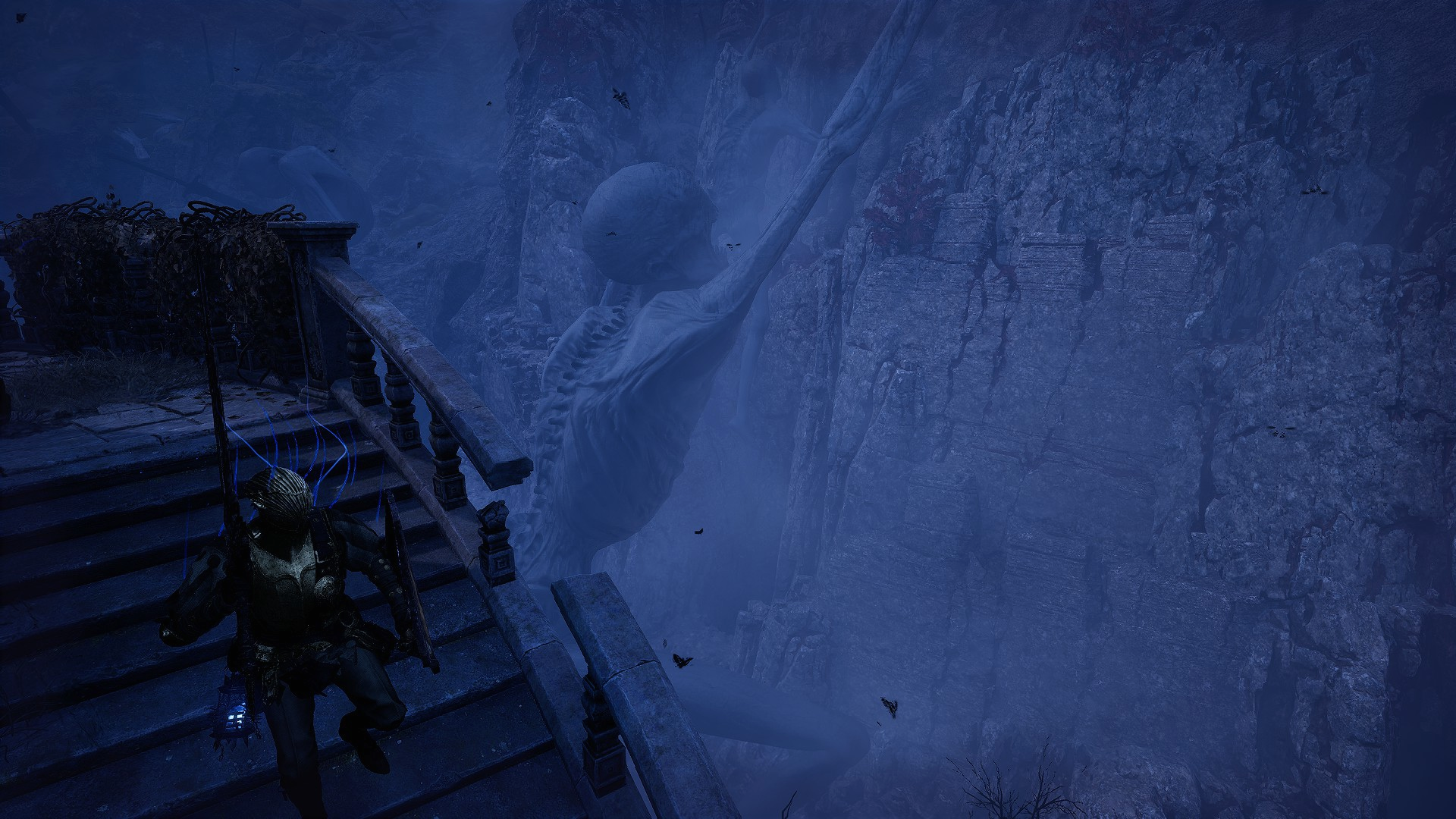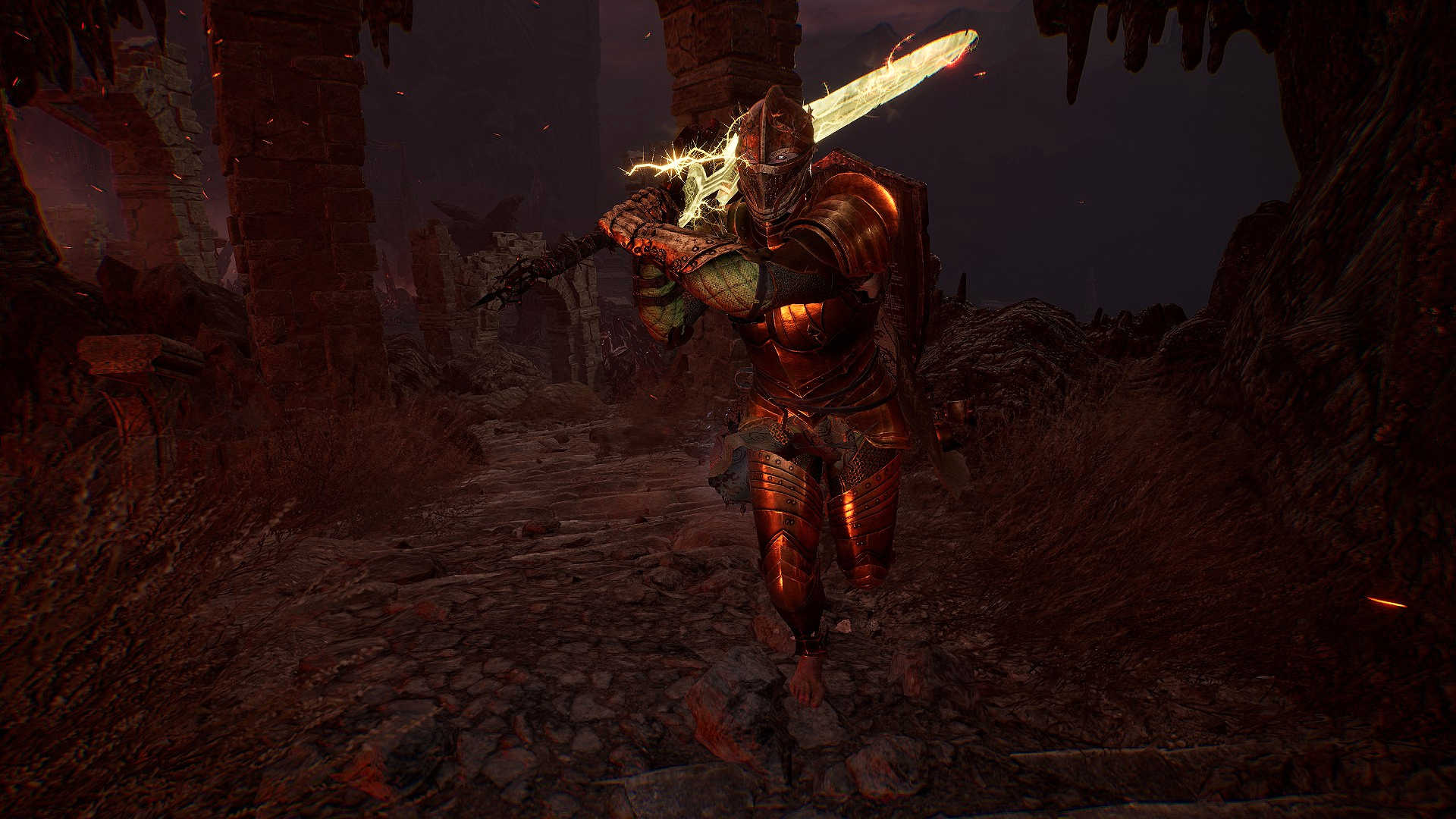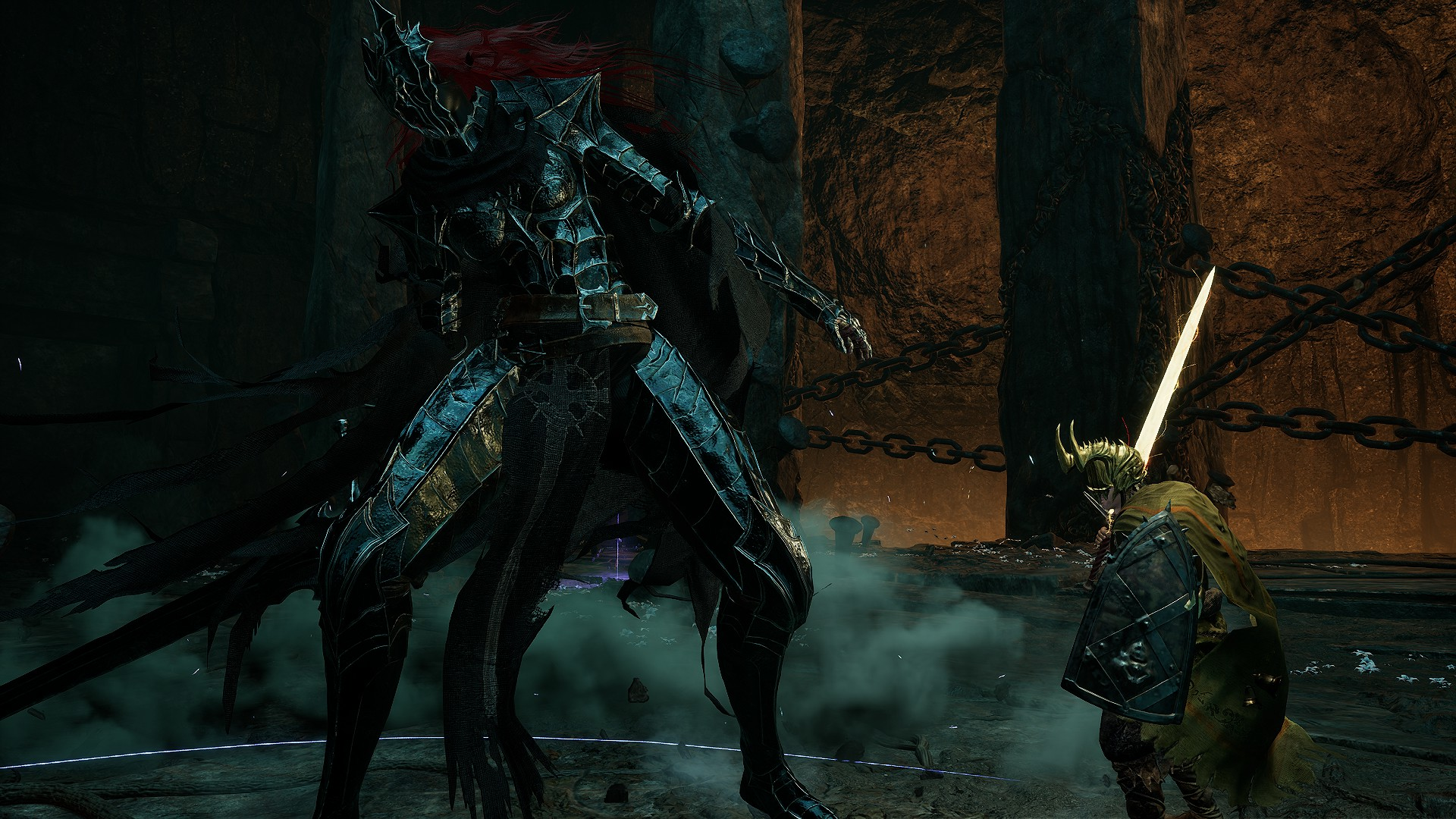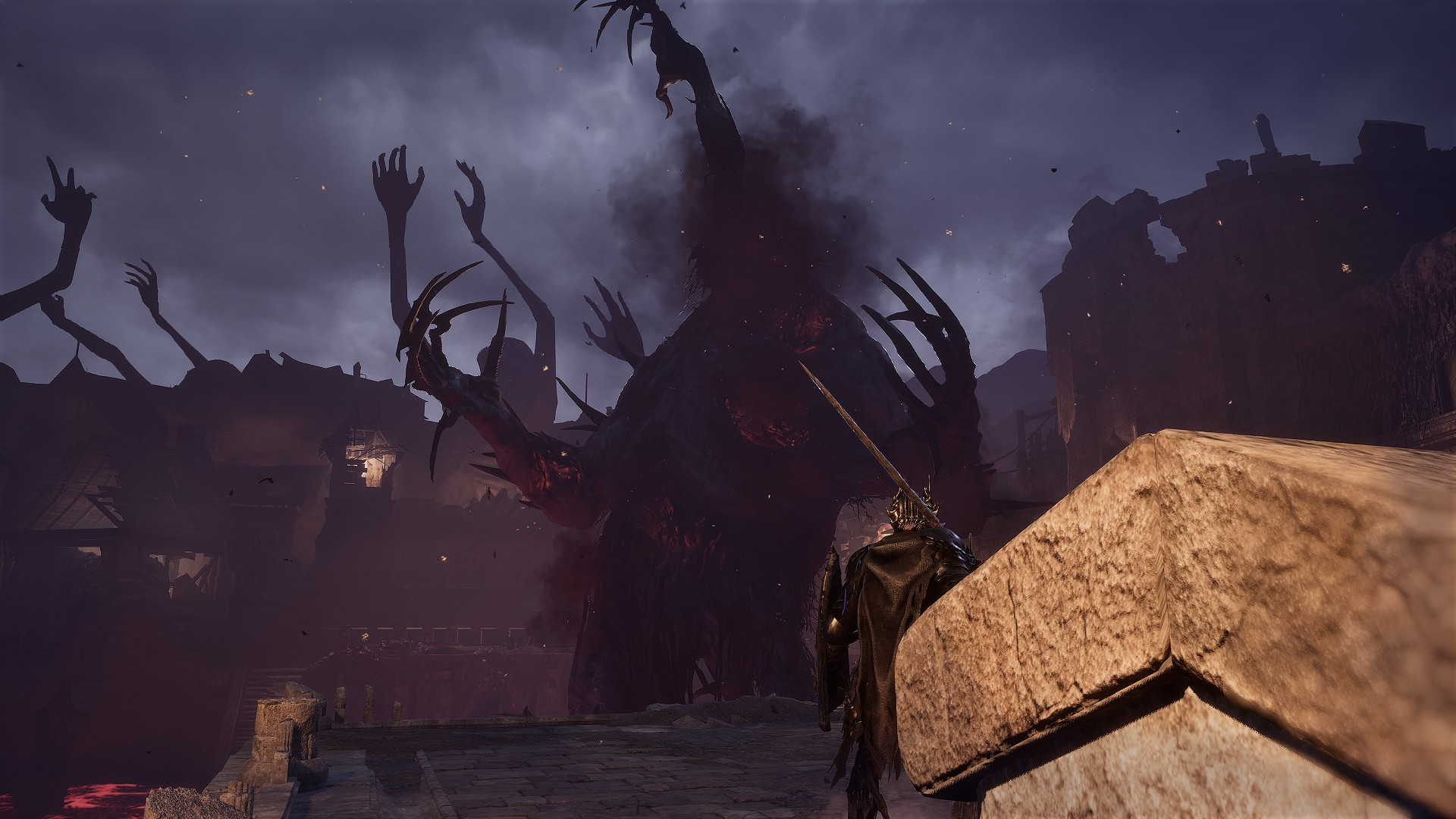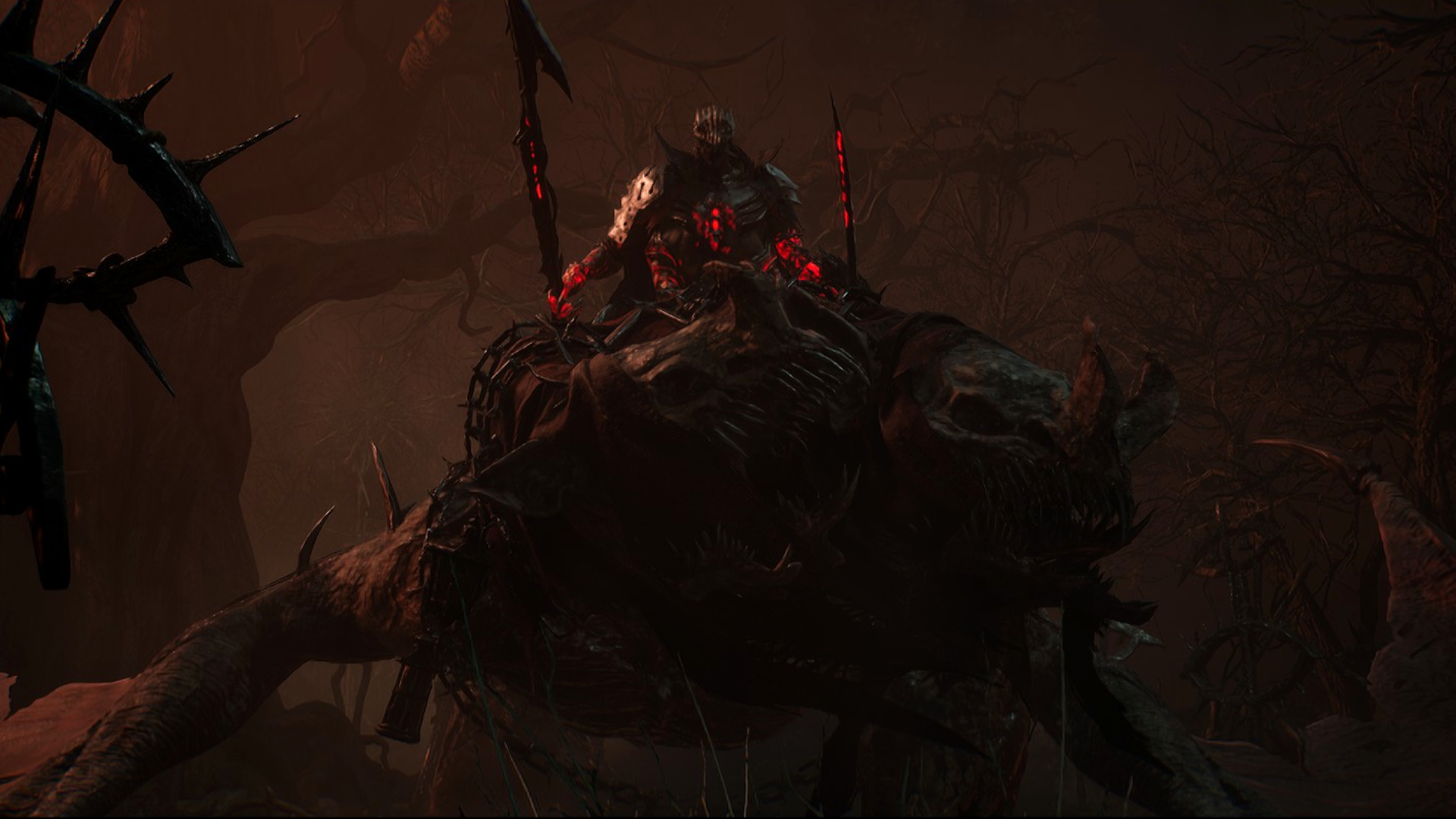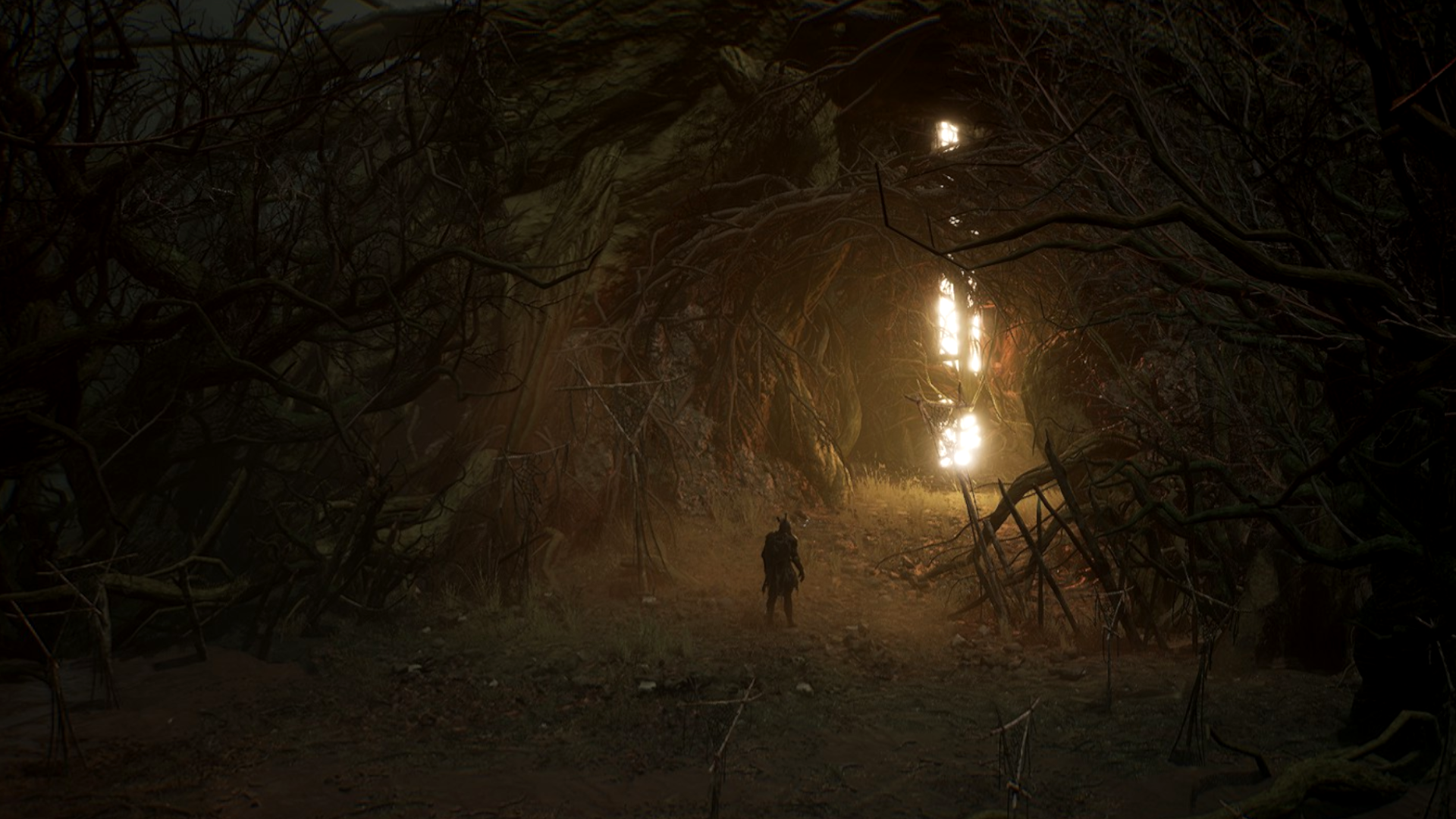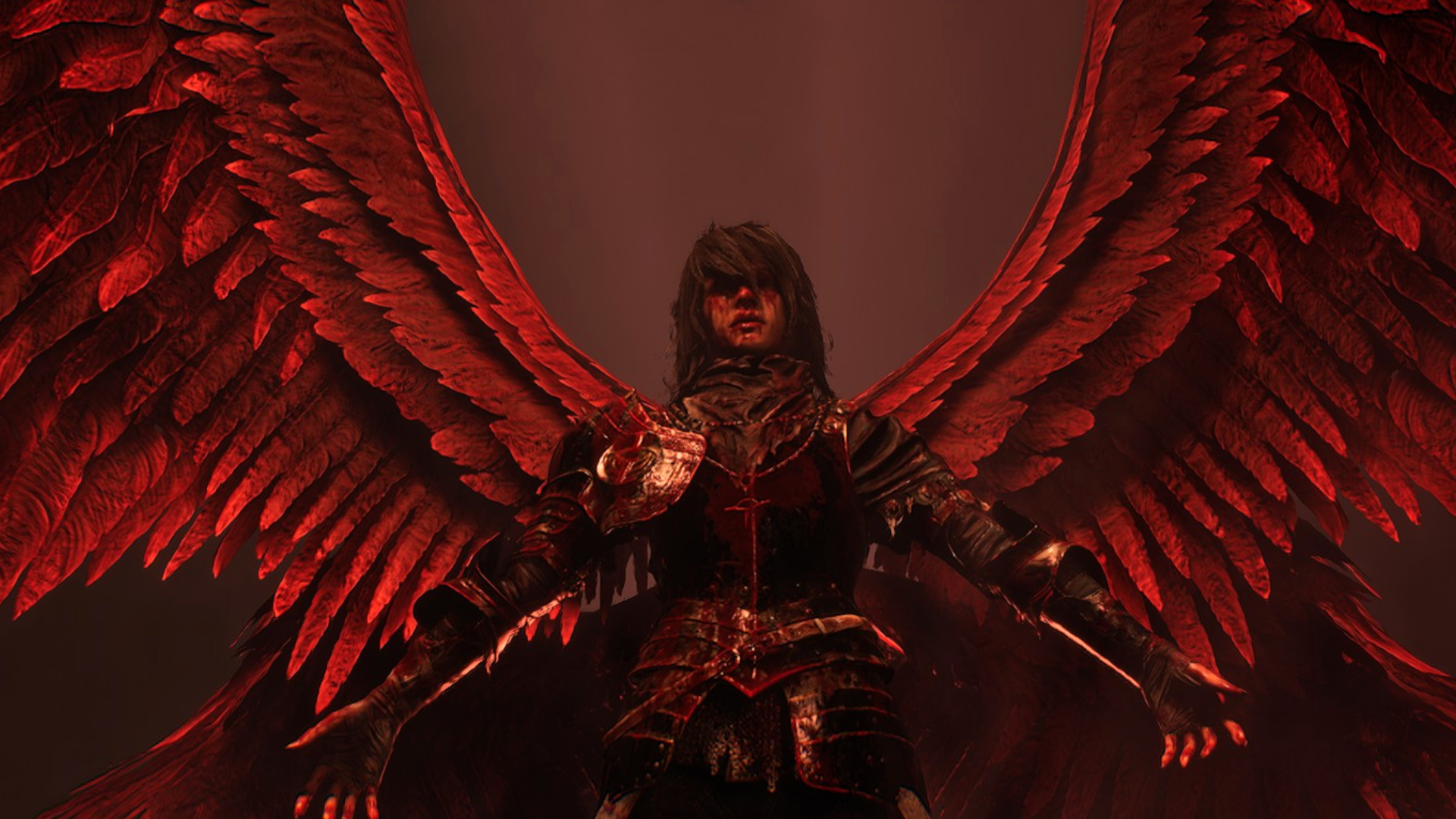Our Verdict
Some of the best boss fights in the genre's recent history, riddled with difficulty spikes in all the wrong places.
PC Gamer's got your back
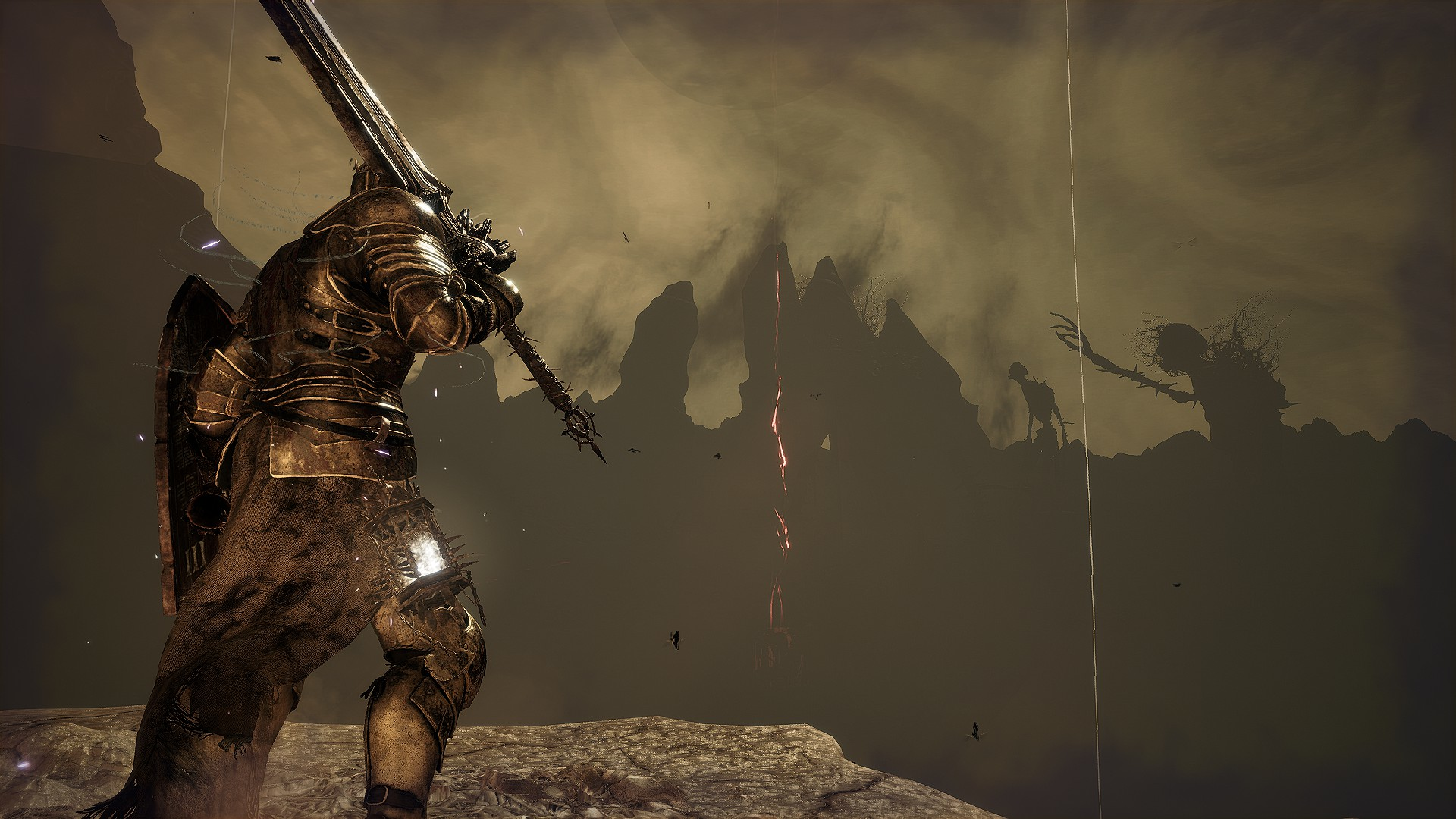
What is it?: A soulslike with plenty of bosses, satisfying combat, and a ton of build variety.
Expect to pay: £49.99/$59.99
Developer: Hexworks
Publisher: CI Games
Reviewed on: NVIDIA GeForce RTX 3060, AMD Ryzen 7 5800 8-Core Processor, 16GB RAM, Force MP600 SSD.
Multiplayer: Yes, PvP and co-op
Steam Deck: Playable*
Link: Official site
*A developer has stated the game is fully supported on Steam Deck on the game's Steam forums.
Lords of the Fallen's 2023 reboot—which I'm just going to call Lords of the Fallen from now on for brevity's sake—is a big, heartfelt attempt to reinvent a franchise which came under heavy fire in 2014 for being one of the first soulslike derivatives. Truth be told, Hexworks has done a damn fine job. Though it's with a heavy heart that I have to admit—I haven't (Lords of the) fallen in love.
I like Lords of the Fallen. Quite a bit, actually. It oozes creativity, its bosses are inventive and cool to look at, it has a huge host of weapons and spells to muck around with, and the Umbral Lamp adds a ton to the setting and the moment-to-moment exploration (as I predicted back when I played a preview of the game in August), allowing you to peek into another dimension, enter it yourself, or just drag enemies off ledges by the scruff of their soul.
It might be one of the best non-FromSoftware souls games we've gotten so far—it certainly hews close to that pedigree in terms of production value, artistic style, and mechanical finesse. I can't, however, ignore some glaring design thorns in Lords of the Fallen's rose.
I love lamp (mostly)
The Umbral Lamp is great. To break it down, there are two realities in Lords of the Fallen—Axiom and Umbral. If you die in Axiom, you go to Umbral, if you die in Umbral, you're dead proper. But the Umbral realm is more than a second chance with a blue filter.
The Umbral plays by different rules, steadily spawning more dangerous enemies the longer you stay submerged. You can visit it manually, and dipping in and out is a big part of exploration. You can also peek into it by holding your lamp up, using it to pass through doors or shuffle along Umbral platforms without having to enter it fully.
Umbral enemies can actually hit you while you're doing this, dragging you into the realm against your will, which is such a fun touch—there's nothing like lifting up your lamp, coming face to face with a horrible lovecraftian beastie, and rapidly slamming the door shut moments before its swipe connects.
The lamp also gives you a cool ability, Soulflaying, which lets you yoink the spirit out of your foes. You can use this to knock them off ledges, or you can hit their soul directly to make them vulnerable to follow-up attacks.
Keep up to date with the most important stories and the best deals, as picked by the PC Gamer team.
While the lamp itself stays fun to play with throughout, I can't help but feel Hexworks could've done more with the concept. Sometimes you'll lamp your way through a hidden door or platform, but most of the time you're choosing to enter the Umbral for heavily-signposted gauntlets. The Risk of Rain-style danger counter adds a welcome element of risk, but it resets whenever you return to Axiom, and I was never really in any threat of getting overwhelmed.
Visually, the Umbral is striking. It really feels like an alien world—and the horizon always holds some unnerving husk of a giant doing something cryptic. I once came to a chasm, died, went to the Umbral, and just had to stop and stare at the artfully-arranged corpse giants clinging to the cliff face.
I'd expected the dual-world elements to throw a spanner into the game's performance, but using the Lamp was a shockingly smooth experience. I can only chalk this up to SSD magic. The game recommends an SSD at minimum—it does say it supports hard drives, though I imagine you'll have trouble if you haven't yet made the leap. In general, the game seems well put together—I ran it smoothly (bar some strange framerate tanks in certain areas) on a Nvidia Geforce RTX 3060 and only encountered a handful of bugs, only one or two of which required a restart.
One thing I could've done without, however, is the Umbral Seeds system. You can plant your own vestiges (bonfires, for Dark Souls vets) at certain flower beds with a consumable item, though you're only allowed to have one planted at a time. In theory, this lets you set your own difficulty based on how much Vigor—the game's currency—you're willing to spend on seeds.
In practice it's just a mandatory Vigor tax. Vestiges are very few and far between, and unless you want to tear your hair out, you'll be wanting two to three seedlings in your backpack at all times. I can't really say the system accomplishes anything that more thoughtfully-placed vestiges wouldn't have.
Monster-slaying groove
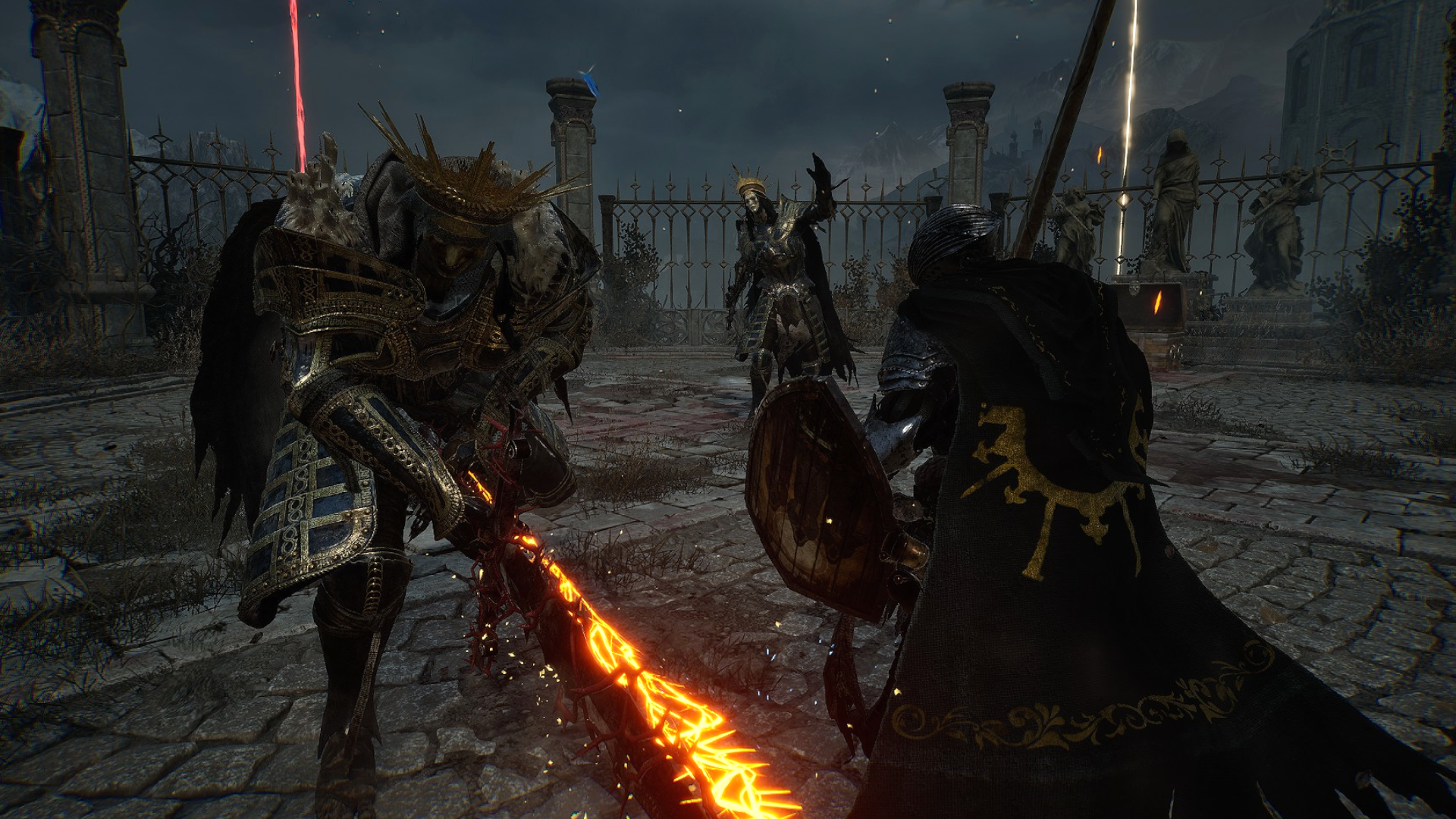
When Lords of the Fallen feels good, it feels really good. A lot of that's owed to your character's movement—even at medium encumbrance, my lamp bearer turned on a dime. When you sprint you really motor, blitzing across the battlefield like a bat out of hell.
If you're using lighter weapons, you feel nice and nimble, while heavier weapons have satisfying heft and a good amount of stagger to them. The claymore I used for the latter half of my playthrough threw enemies into the air and flattened them into the dirt. Everything feels tactile, and the harder you hit enemies, the harder they ragdoll. More than once I slammed someone with my knight's big stonking sword and cackled with joy as their corpse was flung halfway across the room.
You can also time your blocks a la Sekiro: Shadows Die Twice, whittling away at an enemy's posture. Once it's empty, you can trigger a satisfying counterblow by either parrying them again or hitting them with a fully-charged melee attack.
Then there's the "wither" mechanic, which prevents turtling. Enemies can deal wither damage to you with certain attacks, but you'll also take temporary damage if you block an attack without parrying it. Wither damage can be healed back by whacking the offending monster, but if you're hit, all your withered health is gone. This turns blocking into an engaging game of risk and reward, one to be applied as a strategy rather than a panic reflex.
The magic system is the cherry on top, a genuine improvement over other soulslikes in almost every way. Every character comes with a ranged weapon—either something like a crossbow, or a magic catalyst. You can enter a ranged stance that changes your usual hack-and-slash buttons into an assigned array of spells, kind of like aiming down your sights in a third-person shooter, meaning dipping in and out of spell-flinging is quick and nixes the usual D-pad fumbling.
All of this—the nippy movement, the strong tactile feedback, the versatile weapon movesets, the less fiddly magic system, the emphasis of timed blocking—leads to an absolutely sublime flow, the kind that's vital to a good boss fight. Fortunately, those boss fights are something Hexworks has pulled off very, very well.
Beautiful bosses
It's rare that I like every single boss in a soulslike game, but Lords of the Fallen came real close. Only one fight left a sour taste in my mouth—boiling down to "find and kill a bunch of zombies"—but the rest were fantastic. The game is both creative and refreshingly even-tempered with its big bads.
Weaving in between those bolts as I closed the distance was one of the most satisfying experiences I've had in a souls game, period.
The combat system shines in the game's duels against humanoid bosses. They force you to mix up your toolset, parrying one moment, dodging the next, sprinting to avoid ranged blasts or storms of radiant arrows—coaxing you into a satisfying back-and-forth flow that hits so right.
They're also fair. Elden Ring was a touch infamous for bosses who'd string together infinite, high-stagger combos (I'm looking at you, Margit). None of that here—Lords of the Fallen's bosses are well-telegraphed, rewarding players who stay attentive and flexible in their playstyle.
One boss I fought pulled out a crossbow mid-fight to take pot shots at me. I realised those shots were perfectly timed to my character's quickstep, letting me dance left and right like I was playing a rhythm game. Weaving in between those bolts as I closed the distance was one of the most satisfying experiences I've had in a soulslike game, period.
The more monstrous bosses are great, too. Another boss, an Attack on Titan-style giant named the Spurned Progeny, had two phases: one where I was nipping at his ankles, and another where I was fighting it at a terrifying face-to-face level like some kind of raid boss in an MMO. The Umbral Lamp also often comes into play, letting you hoover up Umbral Parasites to remove buffs, detonate landmines, create patches of healing magic, and more.
My only complaint is that many bosses were so fair that they became too easy. Maybe it's because I've still got that Sekiro-style parrying muscle memory burned into my frontal lobe, but few bosses challenged me for long. That's fine—except there's a spanner in the works. A mechanical dissonance when it comes to the rest of the game's level design, which feels at times like a pain machine devised by a wrathful god.
A tale of two games
To describe Lords of the Fallen's mid-to-late game areas as simply "difficult" seems inaccurate. They're flooded with enemies and ambushes—with placements that occasionally feel downright cruel.
One time I entered the Umbral to cross a bridge, got halfway across, and was immediately knocked to my death by an imp entering orbit at mach one. Another time, I had to death-gauntlet a hallway because a fire witch in the next room over had somehow aggroed me, dropping explosive mines while I was swarmed by staggering crossbow bolts and handaxe-swinging warriors.
These specific examples don't really do my experience justice, though. The truth is, there's just too many ambushes to count. In your typical soulslike game, they're just common enough to keep you on your toes. Lords of the Fallen, however, eventually made me develop an internal rule: if it looks like an ambush, it is one.
There is always an enemy behind a smashable wall, there is always an archer taking potshots at you. Long flight of stairs? Coinflip on whether someone'll punt a barrel down it. Any archer looming at the end of a hallway will have several nooks with more bad guys protecting them as a rule, not an exception. Granted, hitting most enemies with my ranged attacks and kiting them to a safer corner worked, but it didn't feel like I'd accomplished anything.
The sheer density of enemies is a real problem, too. By the halfway point, every combat encounter comes flavoured with an entourage of dogs, archers, footsoldiers, zombies, zombies that can fling fireballs—sometimes they'll just double up on the bigger, badder late-game foes, most of which have the ability to create mines, sling magic, or close the distance in a handful of frames.
There's one late-game area where, I kid you not, I can't remember an enemy that wasn't accompanied by two to three dogs. I eventually just began sprinting through fights—I wasn't underleveled, I just couldn't fathom the kind of masochist who would willingly go through all of this fairly.
Hexworks has built a base here which, with improvements to the pacing and encounter design, could genuinely go blow-for-blow with FromSoftware's games.
It feels like a lot of these fights were built in a silo without proper consideration to the overall pacing of an area. Granted, your mileage may vary. Perhaps you'll be using a faster weapon, or a set of spells that are great to deal with crowds—for my Strength/Radiance Paladin, though, a lot of the game's inbetweens were an utter nightmare.
This, combined with the very even-tempered boss design, often made me feel like I was playing two games. One of them gave me fair, exciting spectacles that were a little too soft—the other wanted me dead in as many ways as possible. Personally, I think if your boss battles feel like a holiday from the rest of your game's difficulty, something's gone wrong.
I want to believe
Hexworks has built a base here which, with improvements to the pacing and encounter design, could genuinely go blow-for-blow with FromSoftware's games.
When combat works, it flows like silk. The Umbral Lamp is a genuinely awesome addition. The worldbuilding, the visuals, the boss design—it's a great package, it just needs some fine-tuning. When Lords of the Fallen's great, it's great, and when it's bad, it's a frustrating, capricious labyrinth that hates you.
The game argues with itself. Bosses are fair and fun, but a touch too easy, while exploring Mournstead is a trap-flooded, enemy-overkill nightmare. The cogs don't link up and sing as they should, and the whole machine suffers for it.
That said, if you're hankering for a new soulslike game, one that goes back to the genre's sprawling megadungeon roots, Lords of the Fallen has a lot to offer. I hope we get a sequel, because Hexworks does genuinely have something magic on their hands. It just needs a little more of a delicate touch to really shine.
Some of the best boss fights in the genre's recent history, riddled with difficulty spikes in all the wrong places.

Harvey's history with games started when he first begged his parents for a World of Warcraft subscription aged 12, though he's since been cursed with Final Fantasy 14-brain and a huge crush on G'raha Tia. He made his start as a freelancer, writing for websites like Techradar, The Escapist, Dicebreaker, The Gamer, Into the Spine—and of course, PC Gamer. He'll sink his teeth into anything that looks interesting, though he has a soft spot for RPGs, soulslikes, roguelikes, deckbuilders, MMOs, and weird indie titles. He also plays a shelf load of TTRPGs in his offline time. Don't ask him what his favourite system is, he has too many.
